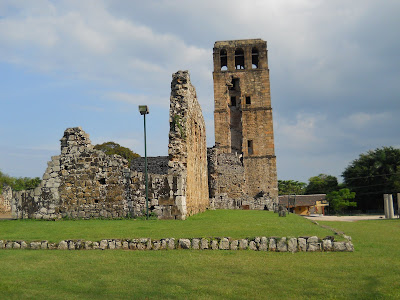On Hallowed Ground

I had often wondered if what attracted me to Granada, Nicaragua’s cemetery—one of my favorite places in the world—was nothing more than morbidity. In other words, perhaps I had an unhealthy fascination with unwholesome thoughts or feelings, particularly about the subject of death and dying.
But last year, while visiting the cemetery yet again, I learned that what lures me there is the call of those I once knew and are now gathered together in one place. As I escorted my mother through the maze of tombs, helping her search for the final resting places of loved ones, I was stunned to discover how many names were intimately familiar to me—many of them role models during my youth. (To read more about these admirable folks, click here.)
And my mortality became all too evident that day.
That was not an unpleasant experience, however; especially because the realization took place in such a serene, comforting setting. At sunset and with the majestic Volcán Mombacho as background, to rest eternal in Granada wouldn’t be a dreadful destiny.

















